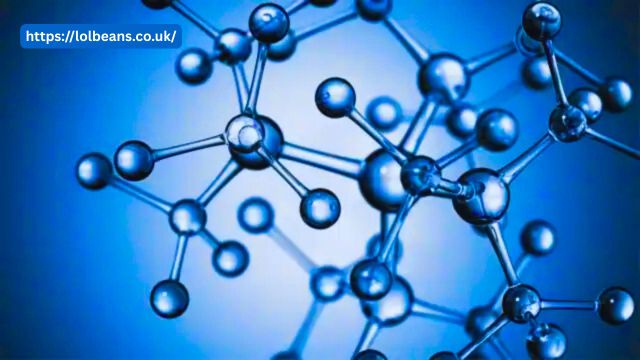In the world of organic chemistry, esters play a vital role in both natural processes and industrial applications. Among these, vinyl formate (chemical formula HCOOCH CH2 H2O) stands out due to its unique reactivity and versatility. When studied alongside water (H₂O), this compound reveals interesting chemical behaviors and mechanisms, contributing to a broad range of uses in synthetic chemistry, polymer science, and even green chemistry applications.
In this article, we’ll delve deep into the chemistry of HCOOCH CH2 H2O covering structural properties, reactivity, reaction mechanisms, and their various practical uses.
What Is HCOOCH CH2 H2O (Vinyl Formate)?
Vinyl formate is an organic compound classified as a vinyl ester, derived from formic acid (HCOOH) and vinyl alcohol (HCOOCH CH2 H2O). Its IUPAC name is ethenyl formate, and it has the following chemical structure:
- Molecular formula: C₃H₄O₂
- Structure: HCOOCH CH2 H2O
This molecule features a formate group (HCOO–) esterified with a vinyl group (–CH=CH₂). The double bond in the vinyl group makes it highly reactive and suitable for polymerization and other addition reactions.
Physical and Chemical Properties
- Molecular weight: ~72.06 g/mol
- Appearance: Colorless liquid
- Boiling point: ~65–70°C
- Density: ~0.97 g/cm³
- Solubility: Moderately soluble in water, soluble in organic solvents
Vinyl formate is relatively volatile and reactive, especially toward nucleophiles, acids, and bases. The presence of both the ester functionality and a vinyl double bond makes it an excellent intermediate in organic synthesis.
Chemistry of HCOOCH CH2 H2O and Water (H₂O)
- 1. Hydrolysis Reaction
One of the most straightforward interactions between vinyl formate and water is acid- or base-catalyzed hydrolysis. In this process, water acts as a nucleophile, attacking the carbonyl carbon in the ester, ultimately yielding formic acid and vinyl alcohol (which tautomerizes to acetaldehyde).
Reaction Mechanism (Acidic Conditions):
- Protonation of the carbonyl oxygen increases the electrophilicity of the carbon.
- Water attacks the carbonyl carbon, forming a tetrahedral intermediate.
- Proton transfers occur, facilitating the cleavage of the C–O bond.
- The products are formic acid (HCOOH) and vinyl alcohol, which rearranges to acetaldehyde (CH₃CHO).
Net Reaction: HCOOCH CH2 H2O→HCOOH+CH3CHO\text{HCOOCH=CH}_2 + H_2O \rightarrow \text{HCOOH} + CH_3CHOHCOOCH=CH2+H2O→HCOOH+CH3CHO
This hydrolysis is useful for breaking down vinyl formate into more reactive or useful chemical precursors.
- 2. Polymerization Behavior
The vinyl group in vinyl formate enables it to undergo radical polymerization, much like other vinyl esters. In the presence of initiators such as AIBN (azobisisobutyronitrile) or peroxides, the vinyl group can participate in chain-growth polymerization.
Mechanism Overview:
- Initiation: A radical species attacks the double bond.
- Propagation: The radical end of the growing polymer chain continues to react with other vinyl formate monomers.
- Termination: Reactions between radical chains terminate the polymerization process.
Resulting Polymer: Poly(vinyl formate), which can further be hydrolyzed to poly(vinyl alcohol), a valuable material in adhesives, coatings, and films.
- 3. Transesterification Reactions
Vinyl formate can undergo transesterification in the presence of alcohols and acid/base catalysts. This involves exchanging the vinyl group with another alkyl group, forming different esters and releasing vinyl alcohol (which rearranges into acetaldehyde).
General Reaction: HCOOCH=CH2+R–OH→HCOOR+CH3CHO\text{HCOOCH=CH}_2 + R–OH \rightarrow HCOOR + CH_3CHOHCOOCH=CH2+R–OH→HCOOR+CH3CHO
This is particularly useful in the synthesis of formate esters, which are commonly used as solvents, plasticizers, and fragrance ingredients.

Industrial and Practical Applications
- 1. Green Chemistry and Solvent-Free Reactions
Vinyl formate has found a niche in green chemistry due to its ability to act both as a reactant and a solvent. Its reactivity allows for solvent-free transesterification, reducing environmental impact and improving atom economy in industrial processes.
- 2. Intermediate in Organic Synthesis
Due to its dual functionality (ester and alkene), vinyl formate serves as an intermediate in the synthesis of:
- Pharmaceuticals
- Agrochemicals
- Flavor and fragrance compounds
Its reactivity with water, alcohols, and nucleophiles allows it to be converted into a wide array of chemical entities.
- 3. Source of Acetaldehyde
As noted earlier, hydrolysis or transesterification of vinyl formate generates acetaldehyde, an important building block in:
- Pesticides
- Paint binders
- Resin production
The reaction provides a cleaner and potentially safer method of producing acetaldehyde compared to traditional oxidation of ethanol.
Safety and Handling
Vinyl formate should be handled with care:
- Flammable: It has a low boiling point and forms flammable vapors.
- Toxicity: Can be irritating to the eyes, skin, and respiratory system.
- Storage: Store in a cool, dry, well-ventilated area away from oxidizing agents and sources of ignition.
Always consult the material safety data sheet (MSDS) before working with this compound in any laboratory or industrial setting.
Future Prospects and Research Directions
- Bio-based Production: Researchers are exploring bio-catalyzed production of vinyl esters, including vinyl formate, from renewable feedstocks.
- Functional Polymer Design: The use of vinyl formate in copolymerization with other monomers offers potential for creating functionalized and biodegradable plastics.
- Catalytic Innovations: New catalysts are being developed for more efficient hydrolysis and transesterification of vinyl esters under milder conditions.
These areas of research point to the increasing importance of vinyl formate in sustainable and advanced materials chemistry.
Conclusion
The compound HCOOCH CH2 H2O (vinyl formate), when studied alongside water (H₂O), offers a fascinating glimpse into the reactivity and versatility of vinyl esters. From hydrolysis and transesterification to polymerization and industrial use, vinyl formate is a powerful intermediate that supports innovation in green chemistry, sustainable materials, and organic synthesis. As scientific and industrial communities continue to seek more efficient, eco-friendly solutions, the role of molecules like vinyl formate will likely expand. Understanding its mechanisms and practical applications can help chemists design smarter, cleaner, and more effective chemical processes.







